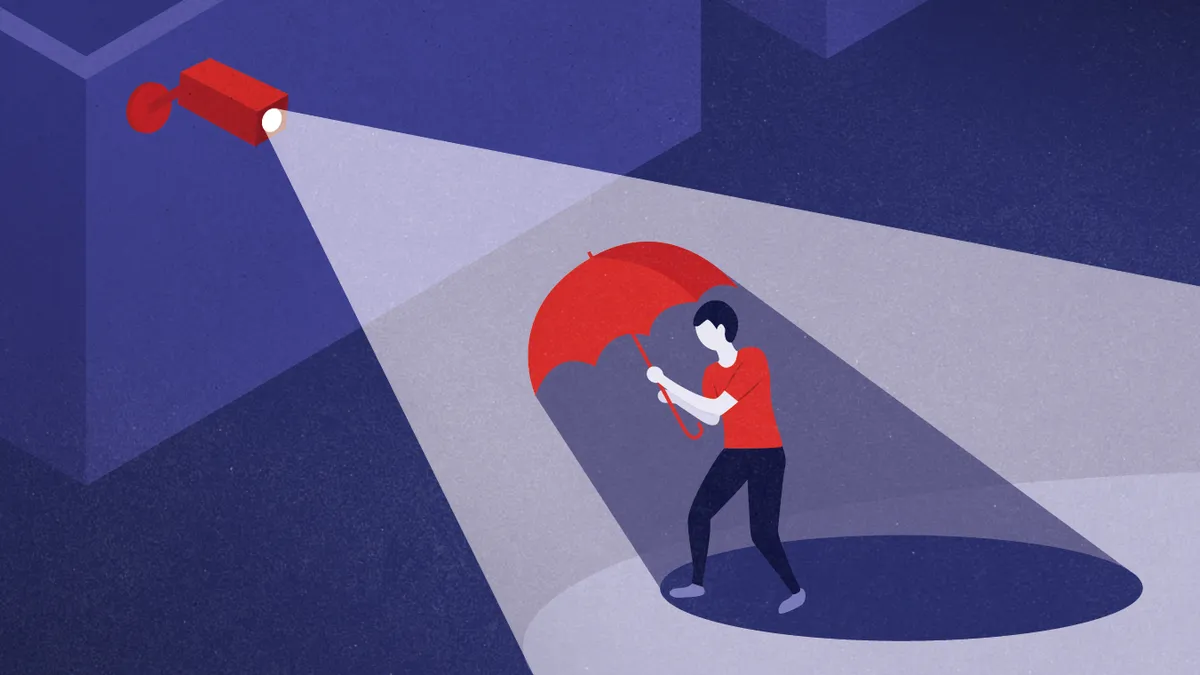Editor's Note: The following is a guest post from Betsy Plattenburg, executive director of Curiosity Lab at Peachtree Corners.
When the movie "Minority Report" debuted to a stunned audience in 2002, it depicted never-before-conceptualized technologies, such as billboards that were personalized to whomever walked by them.
Moviegoers were equally mesmerized and horrified by the idea of 'Big Brother' watching over them. The concept of biometric ads was similar to flying cars in the realm of science fiction: great theater, but not likely in the real world.
Five years later, the first iPhone hit the market, followed by the App Store in 2008. These iPhones and other smart phones were built with more than 100,000 times the processing power, a million times the memory and more than seven million times more storage than the Apollo 11 computers that took humanity to the moon in 1969.
The unimaginable was now reality: smart computers in the hands of regular, everyday people.
While the concept of an "app store" was unheard of 13 years ago, we are awash in applications today. There are currently 2.2 million apps in Apple’s App Store and 2.8 million in the Google Play store. Most of us hit "agree" when downloading apps from any source without giving it a second thought. In fact, a 2017 Deloitte survey of 2,000 U.S. consumers found 91% of people consent to legal terms and services without reading them.
As a society, we've adapted and dramatically changed our expectations of privacy for the convenience of playing a game or getting a weather forecast. Smart gadgets led to mass adoption and acceptance of less privacy — if it was even a consideration at all.
Smart cities and interconnected people and devices have been under development for close to two decades. Autonomous cars were the vision of engineers and futurists: something most people would see in the movies but would never expect in their neighborhood. Yet, in less than two months, autonomy and remote teleoperations of vehicles seems less fanciful and more critical than ever as society explores how to deliver food, prescriptions and packages in a safe, efficient way.
If you had to call a car right now, my guess is that autonomous transportation looks a lot more appealing.
Thousands of businesses that never envisioned a delivery model have transitioned overnight in order to survive the short-term impacts of COVID-19. Long-term viability may depend on rapid adoption of automation and smart city initiatives — from ordering to payments to delivery. Necessity is the mother of invention and smart city innovation will help us transition to a new normal.
We are all forever changed through our shared experience of quarantine, shelter-in-place and loss due to COVID-19. We gave up personal physical freedom in exchange for improving the health and well-being of ourselves, our neighbors and our communities. We have lost schools, jobs, dreams, savings and even loved ones. It is a long road back.
Returning to a more familiar world of human contact and interaction will take time. It will also take a willingness to modify our expectations of both physical and digital privacy. If the only way to stay healthy and return to normalcy is allowing connected devices to take our temperature and monitor our health routinely and remotely, this may be the sacrifice we all make to move forward.
Keep in mind the 91% of people who consent to legal terms and services without reading them. Perhaps smart and connected healthcare is closer than we think. If smart toilets and mirrors already assess our health throughout the day and a random temperature check decides who we can or cannot interact with, our collective ideals about privacy may have permanently changed.
Accepting smart, connected cities may be the fastest path forward to using mass transit, living in dense population centers and gathering together again. Smart city technology can provide a cohesive link between health, safety and community engagement. This way, we will move from being socially distant to being interconnected.











